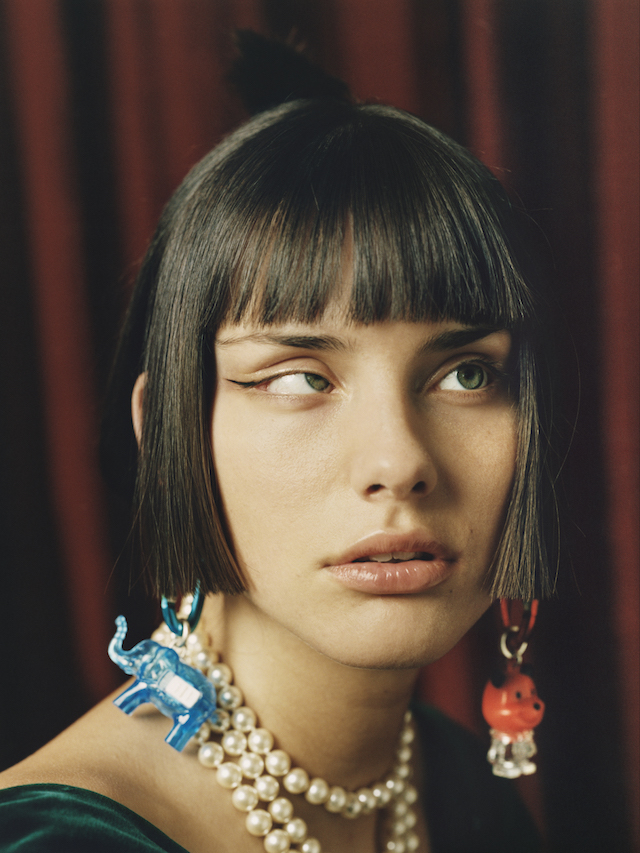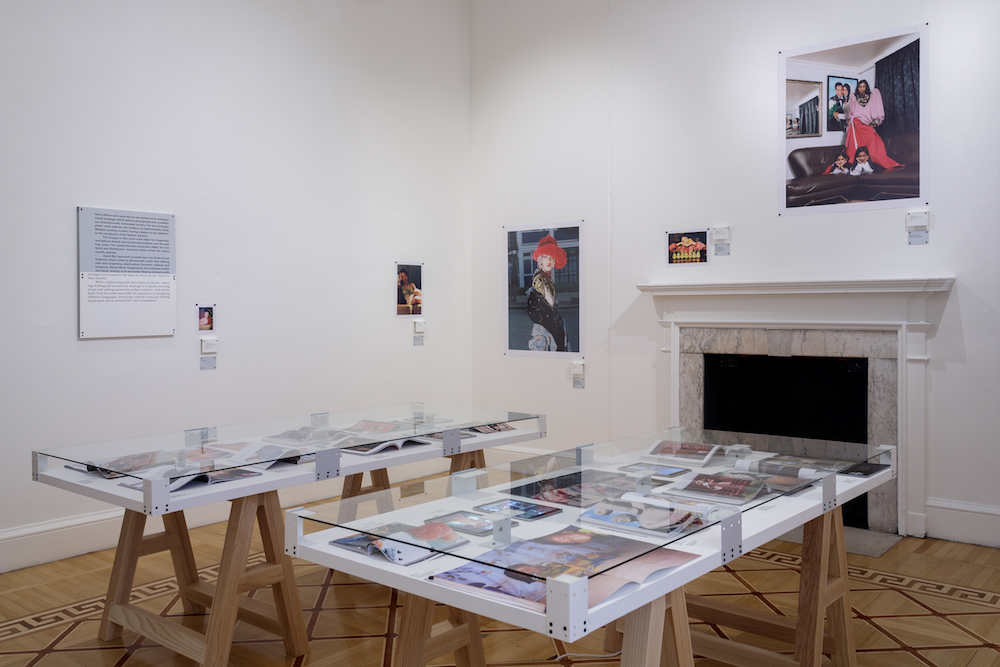Hanna Moon and Joyce Ng’s English as a Second Language exhibition explores cultural identity through the lens of fashion photography
For many of us in the Western world, we accept the near ubiquitous use of English as a given. This imposition and expectation carries complex post-colonial connotations – who decides what is worthy of discussion and what is worth seeing? In an increasingly interconnected but divided world, how we communicate with images – a largely universal language – has never been more important. Celebrating the importance of alternative perspectives is a new exhibition at Somerset House, Hanna Moon & Joyce Ng: English as a Second Language, which explores cultural identity through the lens of fashion photography.
Rising stars Hanna and Joyce, from South Korea and formerly-colonised Hong Kong respectively, use the neo-classical architectural setting of Somerset House to challenge and reinterpret cultural signifiers, Western aesthetics and assumptions about beauty. Bespoke sets, personal props like Hanna’s mothers wedding dress, as well as street-cast models with no prior experience, all contribute to a vibrant and disarming series of portraits. Capturing the alienation of living in a foreign city whilst navigating a multitude of languages – of being ‘lost in translation’ – curator Shonagh Marshall has carefully created a space that showcases often unseen narratives. Hanna and Joyce’s work over the past four years for publications such as Dazed, i-D and Centrefold is also displayed, demonstrating an eclectic range of work in print.
Port spoke to Shonagh, Hanna and Joyce about our shifting definition of beauty, the hustle of London and the meaning of home.

Why is fashion photography an interesting medium to explore Western aesthetics?
SM: Fashion with a capital F, and the system that surrounds it, is a Western construct due to its history and inception. For that reason it has always been a representation of Western aesthetics. With Hanna and Joyce’s work what I noticed that although they were operating amongst the Western fashion system, initially studying at Central Saint Matins and then upon graduating staying and working in London producing work for Western fashion publications, they incorporated signs and symbols from their heritage into their work.
How do Western and Eastern ideas on aesthetic beauty differ? Where do they agree?
JN: I grew up looking at Olay and SK-II adverts, of which either Asian celebrities or models with “white features” or pale, mixed-raced beauties front the TV and billboards. This flood of commercial and “lowbrow images” informs my visual language today and without this background, I wouldn’t have the questions I want to raise and try to answer through my photography now. I take full advantage of the privileged position of a photographer, to have a say in casting and allow my heritage to naturally speak through my images.
HM: As they are two very different cultures I think its fundamentally, also unavoidably, different. We also can’t really separate Western versus Eastern as there are so many different cultures within. It’s hard to generalise and say specifically what Western is like and Eastern is like, however Eastern beauty aesthetics have shifted ever since they opened the door to Western culture. In a way, beauty aesthetics are always changing, moving along with the times and different trends.

Why has our definition of ‘what is beautiful’ expanded in the last 30 years?
SM: What is considered beautiful is constantly evolving and shifting. Throughout history there have been many different approaches to beauty. Over the past 30 years there has been an increase in globalisation due to innovation in technology, as a product there is increased migration, border trade and foreign investment. Our world is more connected than ever before and we have access to different corners of the world and their cultures, therefore this has had an impact on our current view of what is beautiful.
What does ‘home’ mean to you?
HM: Home is somewhere always there for you to go back, which I feel would be my parent’s place in Korea, even though I only go back around once a year.
JN: I grew up, moving homes every one to three years. Looking back, that’s probably why I get really restless and almost depressed when I’m in one place for too long (a month). Sometimes it’s an advantage to be the outsider, observing. I still don’t get that fuzzy warm feeling when my plane lands in London. Whenever I go back to Hong Kong, nothing ever feels the same, other than the existence of my parents. London is essential to my growing right now, but the longer I’m in the UK, the more I yearn for ways to get in touch with my roots. It wasn’t until I went home after I graduated Saint Martins that I wanted so badly a jade bangle, which is thought to be quite a mid-age woman accessory to wear.
What are the cultural consequences of English being such a ubiquitous language?
SM: It is a signifier of historic power and might. I am not entirely sure I can answer fluently on the cultural consequences of this however with China now the second largest world economy one might wonder if this may shift over the next several decades.

How did Somerset House influence the work?
JN: In the beginning it was a bit difficult to use such a recognisable British establishment as a starting point. Street casting is an important element of my work, because it pushes my introvert self to fake some confidence and speak to strangers. I casted directly from Somerset House’s visitors and community over the course of six weeks. They were all unrelated people found at dances, exhibitions, art shows and parties. I wanted them to literally journey through the series of images. The Chinese novel Journey to the West came to mind halfway through the project, because it’s a tale about four characters who lived very different lives, coming together for the same goal of finding the Buddhist scripts in the West (in their case, India or Central Asia). I wanted to highlight the shifting definition of the West, which is completely dependent on context, but usually assumed to be North America and most of Europe these days. It’s about the spirit journeying through Somerset House, this Western establishment.
Why are artists attracted to London?
JN: It’s a place where people are both holding on to the past and also open to moving forward. It’s not an easy city – it’s a hustle, but it has so much to give as long as you’re are giving as well.
HM: I feel like London is very open minded and nursing for new artists, even though they aren’t so helpful when it comes to visas for artists from abroad! There are so many galleries and museum for artists to exhibit in or be inspired by. I feel like I am encouraged to be myself living in London.




